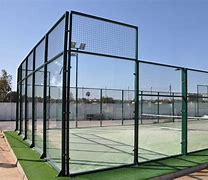

Installation of Padel Court A Comprehensive Guide for Manufacturers
Padel, a rapidly growing racquet sport that combines elements of tennis and squash, has gained remarkable popularity around the world. As more people seek to engage in this exciting activity, the demand for high-quality padel courts has surged. Therefore, the role of padel court manufacturers is crucial in providing well-designed and professionally installed courts that meet the sport's specifications. This article serves as a guide to the installation process of padel courts, highlighting the responsibilities of manufacturers and the essential steps involved.
Understanding Padel Court Specifications
Before embarking on the manufacturing and installation journey, it's important to understand the specific requirements of padel courts. A standard padel court measures 20 meters in length and 10 meters in width, surrounded by walls made of solid materials such as glass or concrete. The playing surface is typically made from synthetic grass or hard court materials, providing the necessary traction for players. Manufacturers must ensure that courts conform to international standards set by governing bodies like the International Padel Federation (FIP).
Site Preparation
The installation of a padel court begins with site preparation, which involves selecting an appropriate location that ensures safety, accessibility, and visibility. A flat and well-drained area is ideal to prevent water accumulation and ensure a stable foundation. Before installation, manufacturers should conduct a thorough site assessment, evaluating soil conditions and making necessary adjustments to ensure the longevity of the court.
Foundation and Flooring
After site preparation, the next step is to lay the foundation. This typically involves excavating the area to a depth of 30-40 cm, followed by the installation of a concrete base to provide stability and support for the court structure. It's crucial to allow the concrete to cure properly before proceeding, as any compromise can lead to cracks or other issues in the future.
Once the concrete foundation is set, manufacturers can move on to the flooring. Choosing the right surface material is essential for player safety and performance. Synthetic grass is a popular choice as it offers cushioning and grip, while hard court surfaces are favored for their durability and low maintenance. The chosen surface should be installed according to manufacturer guidelines, ensuring seamless integration with the overall court design.

Construction of Surrounding Walls
The construction of the surrounding walls is another integral aspect of padel court installation. Often made from tempered glass, these walls not only define the playing area but also enhance visibility for spectators. Manufacturers must prioritize safety by using materials that are resilient and conform to regulatory standards.
In addition to glass walls, corner returns and side fencing are crucial for keeping the game contained while allowing for exciting rallies. It's vital for manufacturers to ensure these walls are securely installed. Proper fastening and support will help maintain structural integrity, especially during vigorous gameplay.
Final Touches and Maintenance Considerations
Once the core structure of the court is in place, manufacturers should address additional features such as lighting, seating areas, and signage. Adequate lighting is essential for evening matches, ensuring visibility without creating glare or shadows. Seating areas enhance the overall experience for viewers, allowing them to enjoy matches comfortably.
Moreover, it's important for manufacturers to provide maintenance guidelines to court owners. Regular upkeep, including cleaning the playing surface and inspecting the structural elements, will prolong the court's lifespan and enhance player safety.
Conclusion
The installation of a padel court is a meticulous process that requires the expertise of manufacturers who understand the sport's unique requirements. From site preparation and foundation laying to wall construction and final touches, each step plays a vital role in creating a high-quality facility. As padel continues to grow in popularity, manufacturers bear the responsibility of delivering safe, durable, and professional-grade courts. By adhering to international standards and best practices, they can ensure that players enjoy this lively sport to the fullest. With a commitment to quality and customer satisfaction, manufacturers will contribute significantly to the flourishing world of padel.
High-Performance Industrial Flooring Solutions China Paddle Tennis Court for Sale
High-Performance Industrial Flooring Solutions Durable & Cost-Effective
Homogeneous Transparent Floor – Durable & Stylish Rubber Floor Solutions
Premium Homogeneous Transparent Floor for Durable & Stylish Spaces Rubber Floor Solutions
Premium Sports Floor Solutions Durable PVC Sports Floor & Rubber Floor for Gyms
Durable Rubber Composite Floor Premium Rubber Floor & Mats Solutions